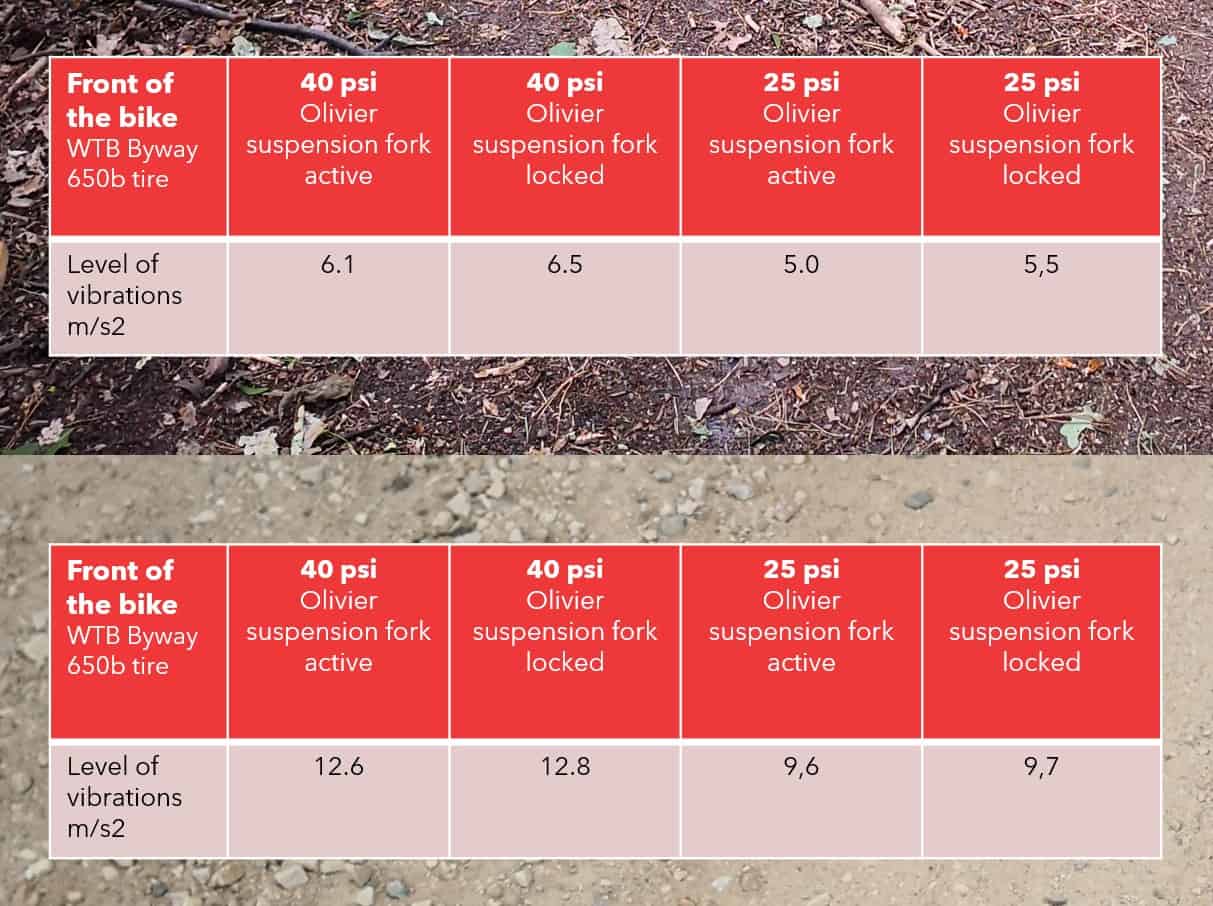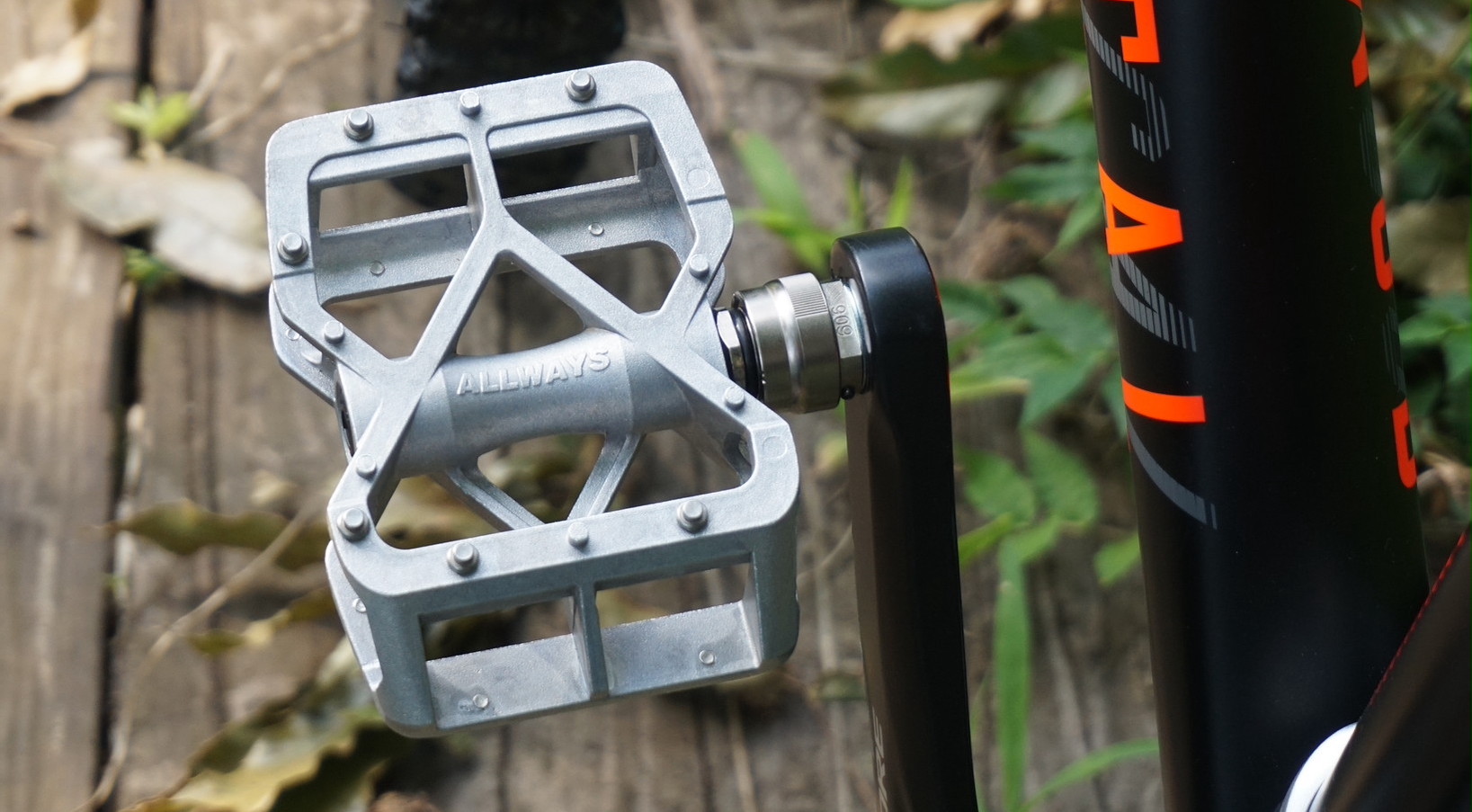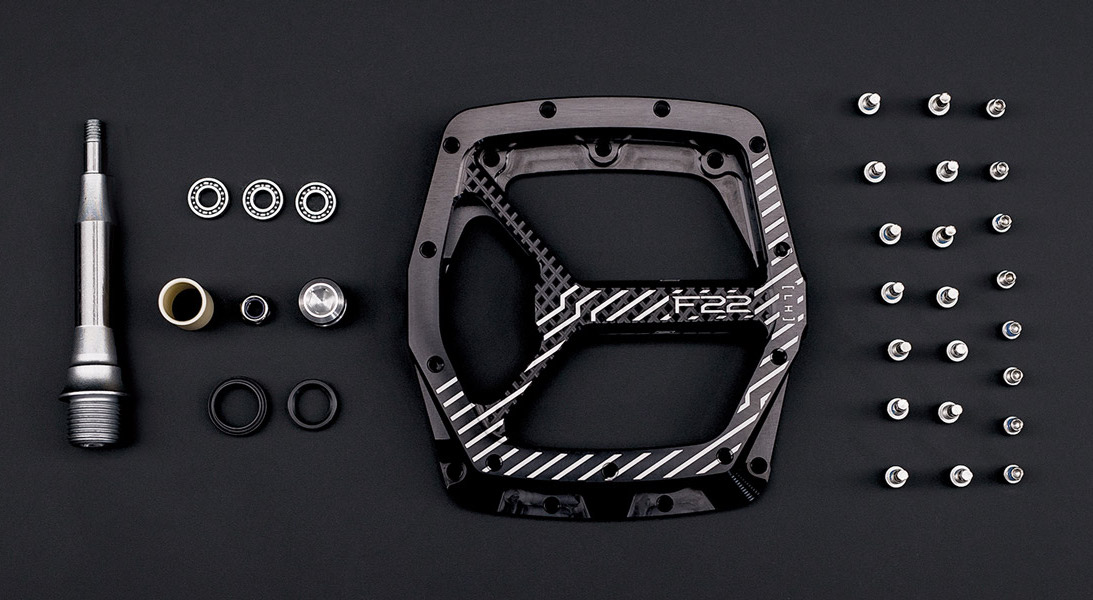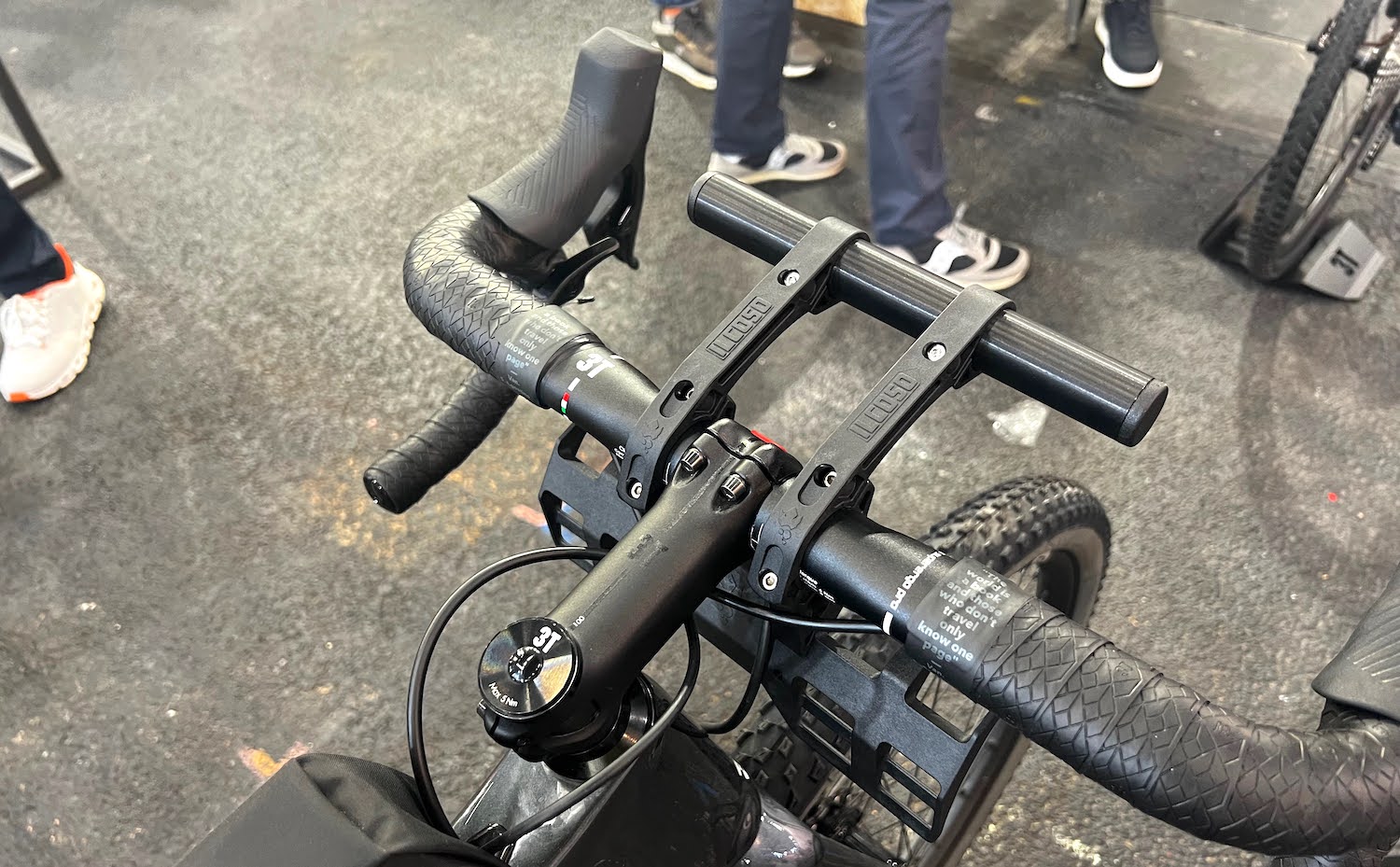Table of Contents
Bicycle suspension has improved in leaps and bounds over the last few decades.
We’ve moved from simple elastomer dampers to very advanced hydraulic cartridge dampers that offer incredible levels of adjustability and performance.
The Cannondale ‘Lefty’ is a standout chassis design and has actually been in production since 1999. This suspension strut (as it’s not technically a fork) has always intrigued me as it actually brings about some significant benefits.
Now, if you’re sitting there thinking the Lefty is weird, consider that the wheels on your car only attach to one side, so perhaps this design is more normal than not!
In this article, we will talk about all things Lefty, and why this chassis might just be the future of suspension design. I also want to take you on a journey of other promising designs to better understand the principles behind progress in this space.
I’ve decided to focus on short-travel products, as there are many misconceptions in this space, and I think the design solutions here are especially fascinating. I’ll cover long-travel Lefty solutions in a separate article because, well, things get weird!
We will be discussing some fascinating data coming out of the CyclingAbout Comfort Lab. Krzysztof has already conducted over 30 vibration tests that you can access via the link.
Why Should Bicycles Use Suspension?
Grip, Stability & Control

On rougher surfaces, be it a gravel road or trail, the front suspension helps the tyre maintain contact with the ground, ensuring better grip and control. This is especially noticeable when cornering and braking.
It also helps to reduce the impact force on your hands. As a result, you do not need to grip the bars as tight, allowing for more effortless steering over bumps.
Higher Comfort & Less Fatigue

Vibrations coming up from the road or trail will dissipate in your body causing fatigue. This manifests as discomfort including muscle soreness and hand numbness.
When we graph bicycle vibration with a rigid gravel fork, it looks something like the graph above. The horizontal axis shows the frequency in Hertz, which is the number of vibration cycles that the fork completes in one second. The vertical axis shows the amplitude, which is more or less the severity of the vibrations.
As you can see from the graph, suspension can very effectively reduce the vibration severity at low frequencies (eg. 20-40Hz), but we see smaller differences as we get into higher frequencies (eg. 40-100Hz).
Faster Speeds & Better Efficiency

A bike with suspension often rolls over an object more easily, therefore maintaining speed. This is because the suspension components (which include your tyres) can absorb more of the bump, meaning your bike and body will lift up and down much less.
This is actually an energy-saving for your legs on flat and uphill gradients.
Fun & Enjoyment
Ultimately, bikes are mostly about fun and enjoyment for most people. Having more grip and control, increasing comfort, and being faster are all ways to unlock extra enjoyment.
Ok, let’s now take a close look at the Lefty design.
Cannondale Lefty
Why is the Lefty design single-legged and upside down?
Weight for weight, Lefty’s are lab-tested to be both stiffer and stronger than typical suspension fork designs. This is in part thanks to the fact they’re upside-down, which positions the thickest and stiffest portion of the Lefty where leverage is greatest – the head tube.
Additionally, the lower assembly, which includes the axle, is forged and machined out of a single chunk of aluminium to further maximise the stiffness-to-weight ratio.
Why does the Lefty use needle bearings?

Leftys can be smoother and more sensitive too, which is especially important on short travel products as they firm up so rapidly.
Regular forks with round tubes often move on four plastic or Teflon-lined metal bushings, which are the main contact points between the upper and lower assemblies. These bushings experience friction that needs to be overcome when the fork moves into its travel, and they even bind a bit as the fork flexes.
In comparison, the Lefty slides up and down on one set of needle bearings and just one bushing. These bearings can still roll and move as the Lefty flexes, allowing the suspension to track better over big and edgy bumps, in particular.
Cannondale says there is around 140% more friction in a typical fork when static, and 75% more when the fork is moving – graph HERE.
Why don’t we use needle bearings on typical suspension forks?

It’s very challenging (or rather cost-prohibitive) to run sets of needle bearings on two keyed stanchions. This is due to the alignment between both legs which needs to be near-perfect in multiple axes, with very tight manufacturing tolerance. If the manufacturer doesn’t get this right, the product can end up with additional friction and potential binding.
Achieving a tight tolerance and mirror finish on two shafts and a few sets of bushings is much easier, and significantly cheaper.
How does the wheel track straight with only one leg?

The secret is found high in the upper assembly where three needle-bearing surfaces create a triangle-in-triangle interface that prevents the shaft from rotating.
Like any air-spring fork, you can easily adjust the spring stiffness with a shock pump, and a hydraulic damper provides precise control over the Lefty’s movement up and down.
Why is the Cannondale Lefty so uncommon?
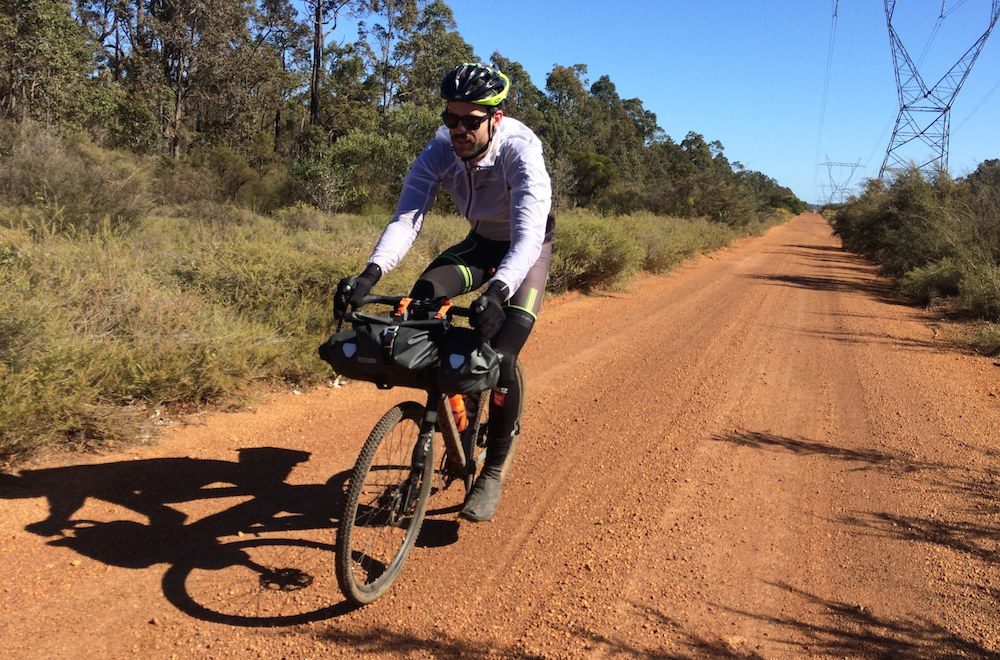
Ultimately, the price is very high compared to a regular fork due to the intensive manufacturing process and small product volumes. This makes spare parts uncommon, and the maintenance needs to be conducted at Cannondale service centres. Various patents also prevent other brands from manufacturing similar products.
But I must say, having had a few Leftys over the years, I’ve found them all to work exceptionally. I especially enjoyed riding the Oliver gravel fork, which shocked me with how just 30mm travel could add so much grip and control when things got rough.
Unlike most suspension systems, the Oliver isn’t designed to sag into its travel, so it feels firmer off the top than most forks. This is to ensure the suspension doesn’t bob on smoother surfaces.
However, the downside to this firm tune is that the suspension does a poor job of absorbing high-frequency vibration, which we verified in a Comfort Lab test. Krzysztof actually found virtually zero difference between the Lefty being locked and unlocked at 35kph on a fast gravel road.
Let’s now put Cannondale’s Lefty to the side and discuss an all-new carbon fibre ‘lefty’ that can handle high-frequently vibration.
Motion La City

In terms of feel, the Motion La City is almost the opposite of the Lefty Oliver.
This comfort-oriented product is easily the most sensitive suspension system I’ve ever tested, in fact, there is so little friction that I was constantly checking my front tyre hadn’t gone flat.
The secret to its sensitivity is that there are no seals, air springs, dampers, or bushings to create friction. Instead, a small carbon leaf spring and linkage do all the work.
Interestingly, the carbon spring is pulled rather than compressed, which allows the suspension to be ultra-soft off the top before firming right up. As a result, your bike glides over small bumps. There’s also an anti-dive link that helps to isolate any braking forces, preventing the suspension from bogging down under hard braking.
The La City is incredibly light. When built into a carbon single strut chassis, this 50mm travel fork is just 1kg/2.2lb. But the spring and link can be built into a fork with a second hollow leg that suits regular front wheels too.
The beauty of a simple and elegant design like this is not its weight, but the fact it requires virtually zero maintenance. This is perfect for hardworking commuting, bikepacking, and fleet bikes.
Ok, the La City sounds pretty amazing, so what are the downsides?
There is no adjustability and no lock-out switch either, so the suspension will bob while you pedal. There is also no damper element, which would normally prevent a fork from bouncing uncontrollably.
This might sound like a recipe for extreme bounciness, however, I never found the La City to feel overwhelmed within its intended use (urban). You can just sit down, pedal along and enjoy its comfort.
There is another interesting leaf spring carbon fork design that I’d now like to show you.
Lauf Grit SL

The Lauf Grit SL employs 12 glass fibre springs to provide 30mm of maintenance-free travel, all in an impressively light 850-gram package (1.9lb).
Like the La City, there is no lockout switch, no adjustability, and no damper, so after a few intense impacts, you might have to deal with some excess energy built up in the springs. The Grit SL is, therefore, best for gravel roads, rather than rough trails.
Like the Cannondale Lefty, this fork doesn’t seem to attenuate vibration better than a rigid carbon fork on fast gravel roads. In fact, according to our data, the best rigid fork might actually provide a marginally smoother ride at 35km/h on a gravel road.
To understand how a rigid fork can possibly provide a more comfortable ride than a suspension fork, we now need to understand what happens when your front wheel encounters bumps.
Upon impact, your fork – be it rigid or suspended – compresses backwards and rebounds forwards. This fore-aft movement is sometimes referred to as ‘splay’, and a high degree of it can be quite effective at damping vibrations.
According to data from Specialized, splay can make you faster up to a certain surface roughness, where suspension forks become more effective. This data is backed up by a Bicycle Quarterly test that found a fork with lots of splay can be as fast as a suspension fork on a rumble strip test.
But it’s important to note that the Grit SL still offers great comfort on fast gravel roads, and you get the advantage of extra grip, control, and comfort on rougher surfaces.
Ok, so what if we wanted the high splay of a carbon rigid fork, the sensitivity of a Motion leaf spring, and the damping system, needle bearings, and lockout of a Lefty?
HiRide Sterra
We would end up with the HiRide Sterra. You might have seen this suspension fork featured on the BMC URS LT gravel bike, but it’s also available as a separate product.
The Sterra has the aesthetic of a carbon fork, and that’s because the lower legs are indeed made from carbon fibre. But it’s inside the steerer is where the real magic happens.
The fork steerer is home to a coil spring, as well as a hydraulic cartridge damper that controls the speed of the spring up and down. This unit offers just 20mm travel, which suits the surface roughness of gravel roads, but it can be surprisingly effective at isolating you from larger impacts too.
However, it’s on fast gravel roads (with high-frequency vibration) where this fork shines.
Most short-travel suspension products employ air springs, which are easy to adjust to your body weight and riding style. However, the many seals of an air spring add to the overall friction, so HiRide designed the Sterra with a coil spring and smooth needle bearings to keep friction to a minimum.
In the CyclingAbout Comfort Lab tests, coil spring products are consistently the most effective at damping vibration. Notable products include the Redshift seatpost, Kinekt stem, and Specialized FutureShock.
While the Sterra is not as sensitive as the Motion fork, it is designed to run with sag, so it will not require the same big impact to get moving as the Lefty. And when you don’t need the suspension travel, you can transform this fork into a rigid one with the simple twist of the lockout dial.
Interestingly, the fork blades offer a similar amount of splay to the most comfortable fork in our comfort lab tests (OPEN U-Turn). According to Tour Magazin data, the Open U-Turn is nearly identical in a fore-aft deflection test (65N/mm vs 68N/mm), adding comfort (and likely speed) outside of the suspension system on fast gravel roads.
The carbon fork blades are also much more aerodynamic than a fork with round tubes, and offer an aesthetic that better matches a gravel bike.
As the moving components of the Sterra are all sealed away and hidden from the elements, service intervals are 3-5x longer than most suspension forks too.
You can optimise this fork for your body weight and riding style with multiple spring rates and preload spacers. In terms of weight, it’s about 800 grams heavier than a rigid fork, which puts it in the ballpark of the Lefty Oliver.
Summary

So, are Lefty’s the future of suspension tech?
I suspect we’ll see more single-strut products in the future. While the weird looks might put off some, the chassis is undoubtedly stiff, light, high-performing and well-proven too. And the reduction in static and moving friction is a big benefit for a short travel application as they stiffen up so rapidly.
Watch out for leftys with increased sensitivity to high-speed vibration, as manufacturers further optimise their products around gravel and road use.
Leaf-spring designs (like the Motion La City) actually suit a lefty chassis perfectly, as the linkage occupies so little space. It’s cool that the leaf spring designs don’t require any maintenance either.



